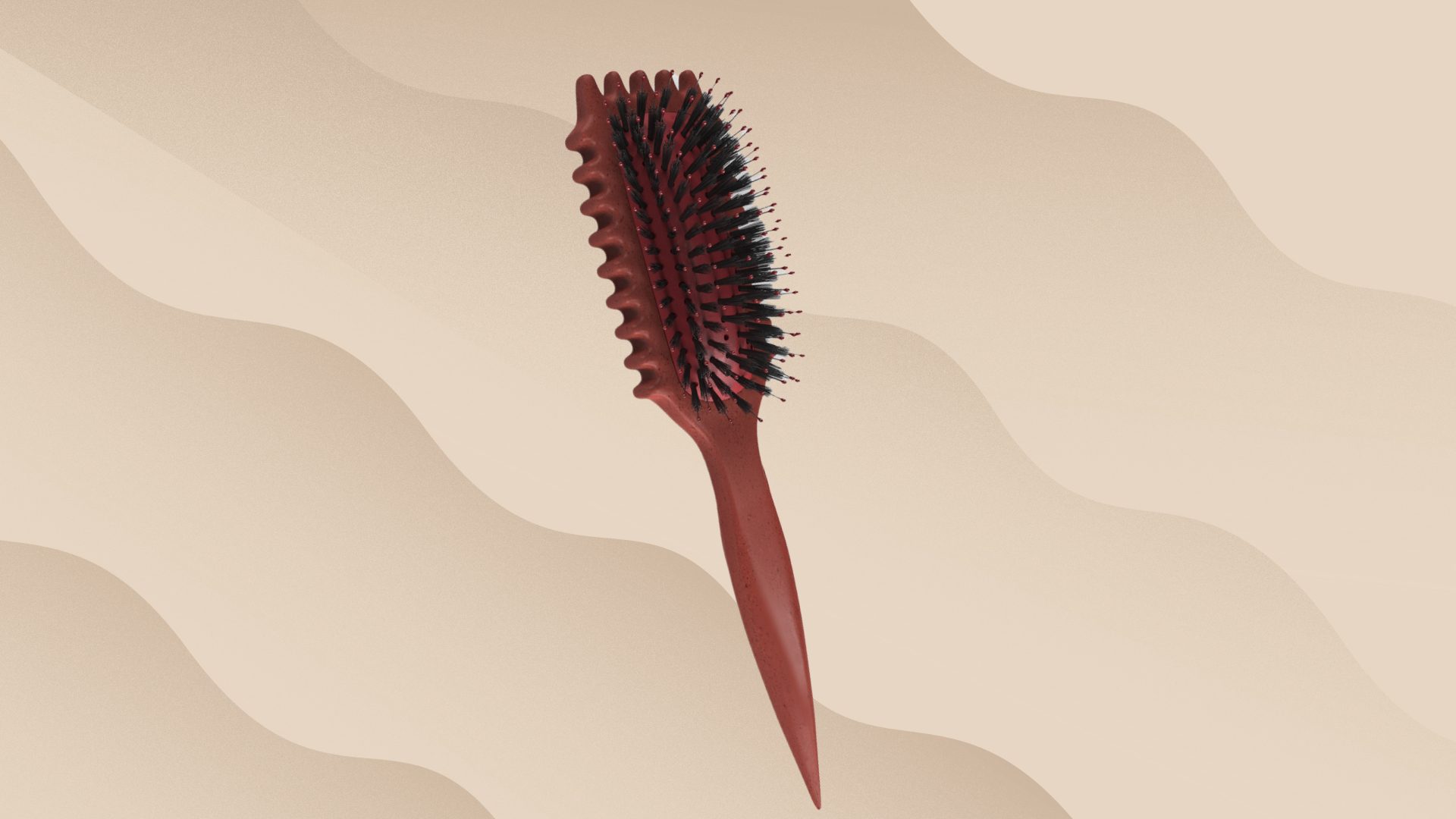
An ingredient found in many personal-care products like shampoo, hair conditioner, and styling products, propylene glycol is widely used because of its relatively low cost and versatile nature. Its inclusion in a formula can fulfill various purposes, making it a popular choice by cosmetic chemists. However, some manufacturers have recently decided to no longer include propylene glycol in their products.
Do not be alarmed by the term antifreeze or by the chemical, propylene glycol. It is safe at the low concentrations when used in personal care products.
This is possibly due to misinformation and propaganda circulated on the Internet in the interest of marketing “natural” products. I avidly support using natural products and avoiding putting toxins into our bodies whenever possible or practical. It can be frustrating to read inaccurate and incomplete information in an attempt to frighten consumers into using different products. In this article, Sister Scientist Erica Douglas, Cosmetic Chemist, and Beauty Industry Expert, discusses the science behind propylene glycol.
The chemical facts about propylene glycol

- It is water-soluble.
- It is synthetic.
- It is non-toxic.
- It is easily metabolized.
Propylene glycol (also known as 1,2 propanediol) is a relatively small molecule with two alcohol (hydroxyl) groups (-OH). It is a colorless, odorless liquid that is completely water-soluble. PG is a synthetic product obtained from the hydration of propylene oxide derived from petroleum products. I do not consider a petroleum-sourced product a bad thing, as I consider the final structure and its properties to be more relevant than the source (unless contamination is a concern).
What is propylene glycol?
Propylene Glycol is a colorless, odorless, and tasteless synthetic organic compound liquid that belongs to the class of diols, which are compounds containing two hydroxyl (OH) groups. It’s chemical formula C3H8O2 or CH3CHOHCH2OH
The FDA has categorized propylene glycol as “Generally Recognized as Safe.”
Even with prolonged direct exposure, there is little to no skin irritation or sensitization. It subsides quickly once the area is flushed. The MSDS recommends avoiding direct handling due to potential irritation, which is a smart recommendation for any chemical–this does not indicate the toxicity level. Remember: in the chemical industry, when a worker is exposed to continuous and large quantities of a chemical in its concentrated form, it is imperative to use the strongest safety precautions possible. This is not relevant to consumers using a product by the teaspoonful if that.
Propylene glycol is non-toxic when ingested, even in reasonably large amounts.
Unlike its dangerous and frequently lethal cousin, ethylene glycol, PG is easily metabolized by the liver into normal products of the citric acid metabolic cycle, which are completely nontoxic to the body. Approximately 45 percent of any ingested PG is excreted directly from the body and never even comes into contact with the liver. The elimination half-life for propylene glycol is approximately four hours, and there is no bioaccumulation (buildup in the body over time). A few rare incidents have occurred where a person ingested a large quantity of propylene glycol and suffered some liver and neurological effects as a result, but these were short-lived and subsided once the material was metabolized and excreted.

The metabolic cycle for propylene glycol
- Propylene glycol → lactic acid → pyruvic acid → CO2 + water
Both experimental and anecdotal evidence to date indicate PG to be completely non-carcinogenic, despite its “petroleum-based” origin. In an interesting study, some rats were fed propylene glycol at amounts equal to 5% of all their daily food intake for two years, which is a huge volume over a large portion of their lifetime. There were no observable effects on their health or behavior.
What are misconceptions or misinformation about propylene glycol?
Misconceptions or misinformation about the use of propylene glycol in cosmetic products has commonly made its rounds around the internet, predominantly due to lack of understanding, incomplete information and/or the amplification of isolated incidents.
Contrary to some unfounded claims, we know that propylene glycol is generally safe to use at regulated concentrations. Also there is no concrete scientific evidence linking propylene glycol to cancer when used in cosmetics.
While there are reports of rare sensitivities in individuals, propylene glycol is generally well-tolerated. True allergic reactions are infrequent, and most users experience no adverse effects.
Also, there are claims that it causes a drying effect. However, technically Propylene Glycol is classified as a humectant, which means it has the ability to pull moisture in from the surrounding environment.
What “antifreeze” really means for consumers
The word is frequently used to alarm consumers, and is simply a scientific term used to describe the lowering or depression of the freezing point of a liquid. An example is the application of salt to roads and walkways in a snowstorm. This process helps melt snow and ice and prevent development of dangerous icy conditions. The salt accomplishes this by lowering the freezing point of water. This is an example of a “safe” chemical being used as antifreeze. Do not be alarmed by the term antifreeze or by the chemical propylene glycol. While few chemicals are entirely without risk, propylene glycol is considered to be safe at low concentrations and is used in personal care products and even food products.
Propylene glycol in personal care products
- It is an effective humectant.
- It is a solvent for fragrances and preservatives.
- It can be used as an emulsifier or co-surfactant.
- It is used as a solvent for pigments in cosmetics.
- It can be used as a preservative due to its antifungal and antimicrobial properties.
- It is frequently used in deodorants and antiperspirants.
- It is found in hand cleansers and disinfecting gels.
- It is a common additive in shaving creams and gels.
I think for those of us with curly hair, propylene glycol’s main benefit is the fact that it is a humectant, and a pretty effective one at that.
How propylene glycol affects hair
- It applies like a humectant (attracts water to the hair).
- It won’t cause build-up.
- It will not evaporate easily (which may cause dry hair).
How is it used in haircare products?
It is a common ingredient used across a variety of industries, including cosmetics, and has a multitude of usages. In cosmetics, one of its most common usages is as a humectant to help maintain skin/hair moisture. It also acts as a solvent, aiding in the solubizing of other ingredients. Additionally, propylene glycol contributes to product texture, ensuring smooth application and absorption. Its versatility makes it a common ingredient in various cosmetic formulations, including lotions, creams, shampoos, and other personal care products.
The application of propylene glycol that is most relevant to those of us with curly hair is as a humectant. All the usual cautions apply with regard to its capabilities to attract water to the hair from the environment or to draw water from the hair to itself. Unless you have the perfect atmospheric conditions, you may experience problems with this ingredient.
Propylene glycol is a completely water-soluble material that will not build up on the hair. It is also important to note that it is a diol with low volatility, meaning it will not evaporate easily and cause dry hair in the manner of low molecular weight alcohols such as SD alcohol and isopropyl alcohol.
Does it cause any adverse side effects for the scalp or hair follicles?
There are is no significant scientific data linking Propylene Glycol to adverse reactions on the scalp or hair follicles. It’s important to note that adverse reactions to propylene glycol are relatively uncommon, and the vast majority of individuals can use products containing this ingredient without any issues. Hair product formulations are carefully designed to ensure the safety and efficacy of ingredients, including propylene glycol. However, as with any skincare or haircare ingredient, patch testing is recommended, especially for individuals with known sensitivities or allergies.
Are there everyday haircare products that typically use this ingredient?
Propylene glycol is commonly found in a variety haircare products from shampoos, conditioners, and styling products, to hair dyes and scalp treatments. Propylene glycol is approved for use at regulated concentrations in all types of cosmetic and personal goods products.
As a curly, it would be wise to be aware if you are using products that contain this ingredient, just in case you observe increased frizz or dryness. Use plenty of moisturizing products to help lock moisture into your hair shaft, which can help prevent any problems caused by a humectant.
Editor’s Note: Since the original publication of this article discusses the use of propylene glycol in personal hair products and food, the popularity of e-cigarettes has brought increased attention to this ingredient. Propylene glycol is used as one of the three main ingredients in e-cigarettes, along with nicotine and flavoring. Propylene glycol has been designated by the FDA as “generally recognized as safe,” or GRAS, for consumption; however, according to the Federal Agency for Toxic Substances and Disease Registry, “We have little information about what happens to propylene glycol in the air.” The concern arises when propylene glycol is heated up and inhaled. In April 2018, the New York Times reported on the presence of formaldehyde in e-cigarettes, “E-cigs often use propylene glycol or glycerol to help transport nicotine and flavors and to create the big vapor cloud. We’ve known for a long time that when we heat these so-called carrier fluids, they can transform into formaldehyde.” Currently, there is little research on the long-term effects of inhalation of propylene glycol through e-cigarettes.
References
- “Case Studies in Environmental Medicine (CSEM”>, Ethylene Glycol and Propylene Glycol Toxicity”
- What is Propylene Glycol?
- Gaunt, IF, Carpanini, FMB, Grasso, P and Lansdown, ABG, “Long-term toxicity of propylene glycol in rats, Food and Cosmetics Toxicology,” April 1972, 10(2″>, pages 151-162.
- Dow
- McKay, T. “Humidity, Humectants and Hair”, online publication, Aug. 2007






